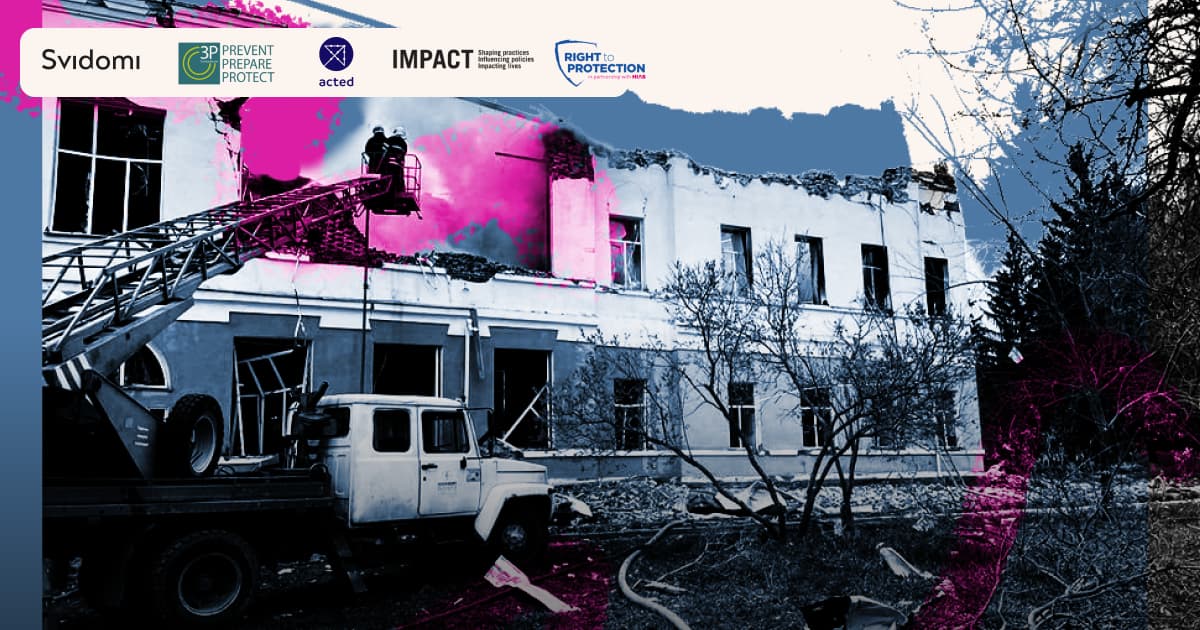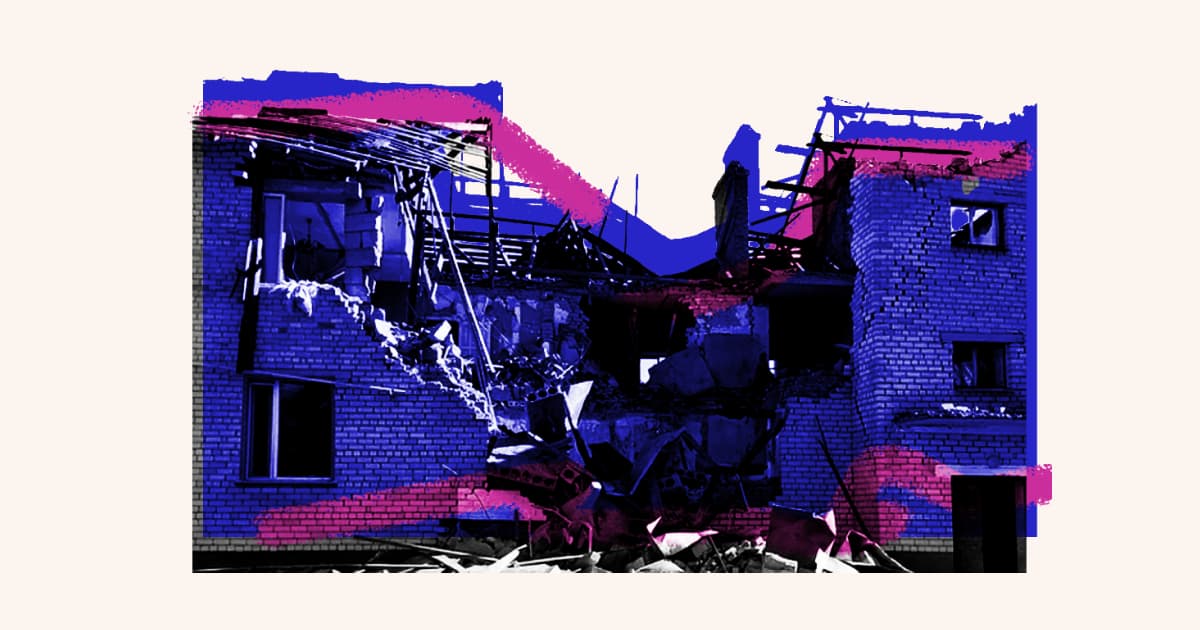From Idea to Action: How the Novhorod-Siverskyi Community in Chernihiv Region Develops its Recovery Strategy

Chernihiv region is one of the ten regions in Ukraine most affected by the war. To date, Russia has caused more than $6.4 billion in damage to the region. Roads have been destroyed, bridges blown up, land mined, and entire settlements wiped out. The most intense fighting in the Chernihiv region took place during the first months of the full-scale war, with parts of the region occupied by Russian forces attempting to capture the capital, Kyiv.
Following de-occupation, communities in the Chernihiv region began their recovery efforts, facing numerous challenges. As of October 2024, 88% of areas potentially contaminated by hostilities remain mined — more than 350,000 hectares. These areas are unsuitable for agriculture or any other activity. Mine contamination also leads to fires and soil pollution.
Damaged roads, transport hubs and utilities near the Russian border are under daily shelling. Access to parts of the border region is restricted due to the presence of border troops and fortifications, making recovery efforts in certain areas too dangerous. Despite this, communities in the Chernihiv region, including Novhorod-Siverskyi, are working to rebuild infrastructure and reduce the threat of mines and destruction.
Svidomi, together with the Right to Protection Charitable Fund, explores how the community of Novhorod-Siverskyi develops and implements recovery processes, what factors are taken into account during reconstruction, and what the recovery project entails.
First documents, then funds: Why communities need recovery projects
Even in 2024, the border community of Novhorod-Siverskyi remains officially recognised as a conflict zone. The Russian military regularly bombs its settlements, destroying civilian and critical infrastructure. These attacks disrupt the community's livelihood, forcing residents to leave. The loss of human resources also affects the local economy — businesses close, logistics become more difficult and financial burdens increase. For example, Russian shelling destroyed two schools in the community, discouraging families from staying and resulting in over UAH 50 million in lost tax revenue.
The destruction caused by the war has severely damaged the community's infrastructure. It is now looking for ways to rebuild its livelihoods, modernise its infrastructure and prevent disasters caused by shelling and landmines.
The community of Novhorod-Siverskyi became a pilot site for the project "Build Back Better: Prevention, Preparation, and Protection of the Population through the Restoration of Sustainable and Environmentally Friendly Water Supply, Hygiene, and Sanitation Infrastructure," implemented by the Right to Protection Charitable Fund in collaboration with partners. The severe damage to the community, which continues to face regular shelling, poses a challenge to donors and partners. The community's limited economic and social resources allow for the testing of recovery solutions that can later be applied to even more war-affected regions, such as the Donetsk, Kharkiv, and Kherson regions.
Chernihiv region, where the community is located, is recovering more slowly than otherwise. Even before the full-scale invasion, the region was heavily dependent on state subsidies and cannot finance its recovery independently. While the state covers most of the costs, NGOs and foreign donors, including private individuals, foundations and international institutions, are actively contributing.
In 2023, the region received UAH 621 million from the Fund for Eliminating the Consequences of Armed Aggression, but by the end of 2023, only 14% of these funds had been used. The regional military administration attributed the slow progress to delays in the disbursement of funds and poorly prepared project documentation.
This underscores the importance of developing well-structured recovery programmes and conducting thorough analyses of community needs and capabilities.
Tetiana Yerokhina, a civil protection consultant for the Right to Protection CF, discusses the challenges communities face in developing recovery programmes and documents.

The first is the security situation. It changes too quickly and unpredictably, making long-term planning difficult. However, recovery efforts need to start now because life goes on, and community residents have a right to all kinds of services. The second key issue is the availability of resources, including staff to carry out recovery activities and funding. Thirdly, there's a need to update certain legislation to respond more effectively to today's challenges,
she explains.
In the recovery process, it is essential that all stakeholders are active participants, not just observers or critics. This includes government, business, civil society and community residents.
Identifying problems and securing solutions: The foundation of a recovery programme
Rebuilding affected communities requires a clear understanding of the root causes of problems and how to address them. A successful recovery programme should be based on analysing local needs, gathering the views of local people and fostering cooperation between all stakeholders. It's important to include both short-term actions and long-term goals to restore and build sustainable infrastructure and a safe environment. This approach ensures that the recovery process is effective and comprehensive and takes into account the interests of the community.
The development of the 2025-2027 Programme for Population Security and Sustainable Recovery of the Novhorod-Siverskyi community is, therefore, a key stage in the Recovery Project.
According to Tetiana Yerokhina, this programme is the final activity of the recovery component of the project and summarises the team's work, including analysis, surveys and consideration of residents' opinions.

During the project discussions with the community, we concluded that security is not only a key aspect of civil protection (which is crucial for our work) but also the basis for the entire functioning of the community. Today, living conditions and access to all kinds of services need to be ensured here and now, and this can only be done through a security-first approach. That is why we have decided to develop, together with community specialists, a programme aimed at creating a safe environment. The document outlines ways to improve security, strengthen resources and bring in additional forces and resources to meet current challenges,
explains Tetiana.
Work on the programme document started at the beginning of the project, as identifying problems is always the first step. Tools such as monitoring, surveys, interviews and situation analysis were used. During this period, there was close cooperation with the local authorities, the public and the civil protection forces. The document must be developed using methods that comply with legal requirements.
"It is important that the programme is reviewed and approved this year so that next year's funding can be allocated within the available resources," says Tetiana Yerokhina.
The programme consists of essential sections defined by the community. These sections identify problems, justify solutions and define the objective — to ensure an adequate level of safety. Target groups are also identified to determine who will benefit from the programme. Specific actions are described step by step, detailing what will be done, by whom, and the sources of funding.
"Each community shall determine the main elements of its programmes. This may include the procedure for developing and adopting programmes or other documents. We followed the requirements set by the Novhorod-Siverskyi community. The results can be both qualitative, such as improved knowledge of fire safety among residents, and quantitative, such as the purchase of two fire engines," says Tetiana, highlighting the flexibility of the recovery programme and its potential outcomes.
The key to creating and implementing a programme is to have a clear understanding of the issues and define the primary objective. For the Novhorod-Siverskyi community, ensuring safety became a cornerstone of the recovery process. Several priority areas were identified: improving the material and technical base of the local fire brigade, raising the professional level of its employees, and increasing public awareness of civil protection. Properly trained personnel, modern equipment and technology enable faster response and mitigation of emergencies, ultimately improving the safety of the community.

"I would like to add that the programme has already been approved by the council, which means that its implementation will start in 2025. In the meantime, we are continuing our lobbying efforts to propose improvements to civil protection legislation," Yerokhina concludes.
The development of a rehabilitation project and an analysis of the community's situation are therefore essential in order to accurately identify the problems and needs to be addressed. This approach allows for the creation of targeted interventions and the efficient allocation of resources to improve the situation, particularly in war-affected communities. Such a strategy ensures a faster recovery of the community while taking into account the interests of its inhabitants.
Time and human resources: What it takes to work on a recovery project
The time spent developing a recovery project is critical, even if there's a desire to start the recovery process sooner. A well-written project document allows for accurate problem identification, assessment of community needs, and identification of optimal solutions. This reduces the risk of inefficient use of resources and ensures sustainable, long-term results. Investing time in planning ensures a structured, focused and highly effective recovery process.

The development of the programme document took the entire duration of the project, while the preparation, drafting, agreement and approval by the executive committee and the council meeting took two months,
says Tetiana Yerokhina.
The development of the recovery programme involves several key stages: describing the issues, justifying the issue and identifying solutions. This approach helps:
- get a clear understanding of the community's situation;
- set priorities;
- develop a strategy for action.
It's also important to
- define the target audience to understand who will be the main beneficiaries of the activities;
- analyse the resources available, particularly financial resources.
This step-by-step approach allows for a clearly defined action plan.
The description of activities by direction is crucial, as they must be clearly formulated and measurable in terms of time, quantity and quality indicators. This will ensure the effectiveness of each activity and guarantee that all actions are achievable within the resources allocated. Actions should be clear and specific, allowing for gradual and effective implementation.

I would add that the programme is not static. Changes can be made if necessary, which is important. By the way, we are working with open data, using information published on the official website. We have also used contributions from our project partners — the ACTED and IMPACT initiatives,
the expert points out.
Community input is essential to the development of the programme. Therefore, cooperation with municipal departments and offices is crucial, adds Tetiana Yerokhina.
People are key to recovery. Not only are they interested in change, but they will also implement the project. The active participation of residents ensures greater effectiveness and results in sustainability. It is essential that all stakeholders — local authorities, businesses, the community and non-governmental organisations — contribute. Only through joint efforts can the conditions for successful recovery and development be created.
The initiatives are carried out by the Right to Protection CF within the framework of the pilot project “Build Back Better: Prevention, Preparation, and Protection of the Population through the Restoration of Sustainable and Environmentally Friendly Water Supply, Hygiene, and Sanitation Infrastructure,” which is being implemented in collaboration with the 3R Risk Reduction Consortium and supported by the NGO ACTED.





